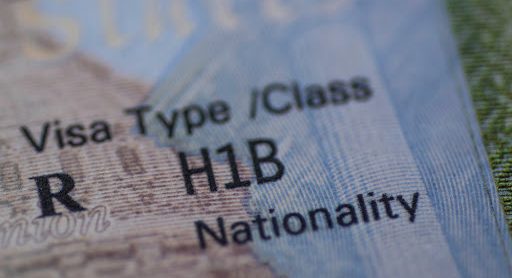Be the first one to receive latest updates.
H-1B should be Scrapped

H-1B visa is a work permit that allows an immigrant worker to get employment in the U.S. for between 3 and 6 years, provided they’re rendering a service that employers cannot readily secure within the local U.S. workforce. This visa is a highly sought-after one for obvious reasons; beyond the availability of exclusive skilled job-openings, beneficiaries are also able to apply for a change of status (green card or permanent residence).
Merely a few months ago, reports surfaced that several companies were backing lawsuits against the ban of the H-1B visa. As the times progress, finding the right answer to the above question only continues to gain increasing importance. Lives and livelihoods are at stake, and determining whether or not this program should continue could greatly influence the lives and actions of thousands, foreigners and Americans alike.
While the H-1B originally provided a perfect supply of sorts to the demand for specialty workers in the U.S., while giving the migrant workers themselves a foot-in-the-door to becoming registered citizens of the United States, the H-1B visa has however, over time, become a tool for profiteering. It is the common practice now for corporations to aggregate large numbers of highly sought-after H-1B visas, and then sub-contract them to other companies at a profit. While this subcontracting is not in itself unlawful, it nevertheless defeats the aim of the visa program to foster relationships between employers and beneficiaries. The current administration is putting in place policies to frustrate this sort of arrangement, by requesting further details of employment progress to verify the employer-employee relationship between the visa recipient and the purported employer. The effectiveness of these policies has, however, yet to be seen.
Because of how highly competitive the H-1B application process is, the lottery approach has been adopted, yet it appears there has been a perversion of this process, for the emerging trend shows an inordinate concentration of visa placement in certain areas of southeast Asia, and there is no reflection whatsoever of a generality to the process. If the 2019 statistics are anything to go by, a 74.5% allotment to India makes one wonder just how such a large number of people can be so amazingly lucky.
In its purest form, the H-1B program is supposed to create a platform for employers who can’t find the particular business acumen or capabilities they need within the country’s workforce the opportunity to seek that aid (temporarily) from qualified personnel outside the country who wouldn’t be able to work in the United States otherwise.
What Went Wrong with the H-1B Visa Program
From everything stated above, the H-1B program sounds like a nice, solid idea. The concept is simple; provide companies that need a specific type of aid to the personnel that they cannot get within the country. So where precisely did things go wrong?
According to a list of the top users of the H-1B program released by Information Week, it is possible to see that the visa program is and has been severely abused.
In addition to this, a report published by Youyou Zhou in 2017 reveals that more and more employers veer towards employing H-1B visa holders because with them, the employers can easily pay them less to do more work for longer periods of time.
Somewhere along the line, the focus shifted from simply employing individuals with unique skill sets to hiring cheap labor. Further, it should be borne in mind that the H-1B was essentially intended to be a fall-back plan, and not a primary option. In recent times however, certain employers have found that, owing to the fundamentally vulnerable status of immigrant workers, they quite often are not so vocal about receiving their full entitlements as citizens would, and so these employers find it more cost-effective to bypass the full requirements of pension, medical benefits, and even salary payment. It goes without saying that these employers will then give migrant workers employment preference over equally skilled Americans.
While on the face of it, the process appears to be all pros, and it seems almost inhumane to consider jettisoning it in light of the boundless opportunities it offers professionals from all across the globe, the all-too-unpleasant reality of the H-1B visa shows it does not exactly serve the ends for which it was formulated, and in the face of the failure of several Government administrations to restructure the H-1B enough to rid it of the prevalent fraud and profiteering it’s being used to perpetuate, it becomes necessary to simply abolish the H-1B and go back to the drawing board to map out an actually effective system that fosters inclusion at the same pace as it provides the U.S. with foreign workers in specialty occupations.
The Way Forward
The standards and goals that this program once represented has long disappeared, if they ever truly existed in the first place. What the H-1B visa program represents now is a platform that capitalizes on the situation of these talented individuals with the sole purpose of turning a profit.
The program needs to be stopped as it has already degenerated beyond the point of resuscitation. Any attempts to reform it now will most likely fail as the trend it is on currently will only continue to grow and worsen.
What Can be Done
Working hand in hand Stop Now helps you take a stand against this exploitation and discrimination. Through donating and volunteering with us, you can make the voices heard and help underpaid workers all over the country get the right treatment they deserve.
Our vision and mission is a society where individuals are treated fairly and with justice. We aim to transform the social sector for good through positive action.




